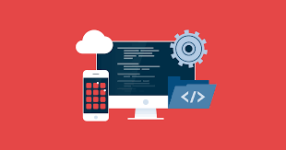The Invisible Force Behind Technology
In the digital age, we often hear the term "software" used across a variety of devices and platforms — from smartphones and laptops to washing machines and smartwatches. While hardware is the physical component of a computer, software is the invisible force that tells the hardware what to do. It brings machines to life, enabling them to perform a wide range of tasks — from sending emails and playing music to running businesses and launching rockets.
This article delves deep into the world of software: what it is, the different types, how it works, and its vital role in modern society.
What is Software?
Software is a set of instructions, programs, or data used to operate computers and execute specific tasks. Unlike hardware, which is tangible and physical, software is intangible — you can’t touch it, but it is essential for making devices functional.
Software acts as a bridge between the user and the hardware. When you press a key on your keyboard, the hardware sends a signal, but it’s the software that interprets the signal and performs the required action — like displaying a letter on your screen.
Types of Software
Software can be broadly classified into two main categories:
1. System Software
This type of software is responsible for managing the hardware and core system operations.
- Operating Systems (OS): Examples include Windows, macOS, Linux, Android, and iOS. The OS is the foundation of a computer system that controls the hardware and provides a user interface.
- Device Drivers: These allow the operating system to communicate with hardware components like printers, keyboards, and graphic cards.
- Utilities: These are small programs that perform system maintenance tasks, like antivirus software, disk cleaners, or backup tools.
2. Application Software
This software is designed for end-users to perform specific tasks.
- Productivity Software: Includes Microsoft Office, Google Docs, and spreadsheets.
- Multimedia Software: Tools like VLC Media Player, Photoshop, and video editors.
- Web Browsers: Such as Chrome, Firefox, Safari, and Edge.
- Games and Entertainment Apps: From mobile games to virtual reality apps.
- Business Software: Includes accounting software, CRMs (Customer Relationship Management), and ERPs (Enterprise Resource Planning).
3. Programming Software
These tools help developers write, test, and maintain software. Examples include:
- Text Editors (e.g., Notepad++, Sublime Text)
- Compilers and Interpreters
- IDEs (Integrated Development Environments) like Visual Studio, Eclipse, or PyCharm.
How Does Software Work?
Software is written using programming languages such as Python, Java, C++, JavaScript, and many others. These languages allow developers to write instructions that the computer can understand.
The process usually involves:
- Writing the code in a high-level language.
- Compiling it (converting it into machine language).
- Running it using the system software.
- Interacting with the hardware to complete tasks.
For instance, if you open a music player and play a song:
- The application (music player) receives the input.
- The OS manages file access and audio output.
- The driver communicates with the sound card.
- The speakers play the music.
Importance of Software in Daily Life
Today, software plays a critical role in nearly every aspect of life:
- Education: Online classes, learning platforms, and digital libraries.
- Healthcare: Hospital management systems, diagnostic tools, and telemedicine.
- Finance: Banking apps, stock trading platforms, and accounting tools.
- Entertainment: Streaming services like Netflix, gaming apps, and music players.
- Transportation: GPS navigation, ride-hailing apps, and vehicle control systems.
- Business: Automation of operations, data analysis, and customer management.
Software Development Life Cycle (SDLC)
Creating reliable software involves a systematic process known as the Software Development Life Cycle, which includes:
- Requirement Analysis: Understanding what the software needs to do.
- Design: Planning how the software will work.
- Implementation: Writing the actual code.
- Testing: Ensuring the software works correctly and fixing bugs.
- Deployment: Making the software available to users.
- Maintenance: Updating and improving the software over time.
Trends in Software Development
The world of software is constantly evolving. Some major trends include:
- Cloud Computing: Software is increasingly hosted on the cloud, allowing access from anywhere.
- Artificial Intelligence (AI): Smart software that learns and makes decisions.
- Mobile-First Development: Designing software primarily for mobile users.
- Open Source: Many software applications are freely available for modification and distribution (e.g., Linux, Firefox).
- DevOps: Combining software development and IT operations for faster delivery.
Challenges in Software Development
Despite its advantages, software development comes with challenges:
- Bugs and errors can cause functionality issues.
- Security vulnerabilities need constant patching.
- Compatibility issues with different devices and operating systems.
- Scalability when handling large numbers of users.
That’s why testing, quality assurance, and updates are crucial parts of software management.
Conclusion
Software is an invisible yet indispensable part of modern life. From the apps on our phones to the complex systems running hospitals, banks, and governments, software powers the world. Understanding software — how it works, what types exist, and how it’s built — gives us a deeper appreciation for the technology we rely on daily.
As software continues to evolve with advances in artificial intelligence, automation, and cloud technologies, its role in shaping the future will only grow. Whether you're a user, a student, or an aspiring developer, learning about software is both relevant and empowering.

